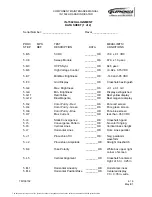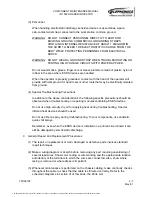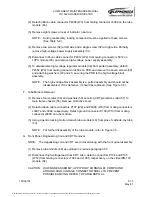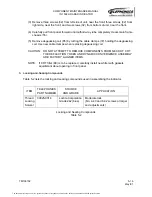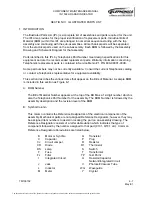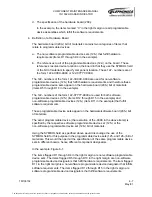
COMPONENT MAINTENANCE MANUAL
IN 1502H RADAR INDICATOR
TM109102
5-10
May/01
(2) Grasp the component with two fingers and alternatively apply soldering iron with flux
on the tip to each component lead, rocking component as each lead becomes
unsoldered. Do not overheat the circuit board. Repeat, alternatively heating leads and
rocking component until component is removed.
NOTE:
A cup-shaped desoldering tip can be used with advantage, simultaneously
unsoldering all leads.
(3) Reheat each point on circuit board from which a lead has been removed. When
remaining solder melts, use solder sipper as required until holes in board are clean
(as indicated by no solder on the walls, top or bottom of the holes in the circuit board).
(4) Using solvent and pipe cleaner tips, carefully scrub both sides of the circuit board
(holes, pads, etc.) from which component was removed.
(5) Insert new component into holes on circuit board, ensuring that component
orientation (transistor tab, etc.) is the same as that of the component that was
removed. Ensure that component height above (or flush with) circuit board is the
same as that of the component that was removed.
NOTE:
Do not bend or crimp component leads to hold component in position prior to
soldering. It is recommended that component leads remain straight when
protruding through board. Keeping the leads straight makes component
replacement easier and prevents damage to the circuit board when
replacing components.
(6) Use flux and solder sparingly. Solder component to printed circuit board from track
side of board. Do not use excessive heat and ensure that the position of the
component does not change during soldering.
(7) Carefully inspect solder joints to ensure excess solder has not been used and that no
short circuits hare in evidence. Solder should fill the circuit board hole through which
the component lead is inserted.
(8) Using small diagonal cutters or end nippers, snip excess leads from components.
(9) If more than one component is being replaced, repeat the preceding procedures for
each component.
(10)When all components have been replaced, use a small brush or pipe cleaner and
solvent to clean new solder joints. Ensure that all flux and solder rosin is removed.
Use a round toothpick to help remove heavy deposits of rosin. Solder joints should be
smooth, bright and clean when properly soldered and cleaned.
F. Replacing Power Transistors
(1) Unsolder leads and remove attaching hardware. Remove transistor and insulator.
(2) Apply Thermal Joint Compound Type 120 (Wakefield Engineering, Inc.) to mounting
surface of transistor insulator and to mounting surface of replacement transistor.
The document reference is online, please check the correspondence between the online documentation and the printed version.



